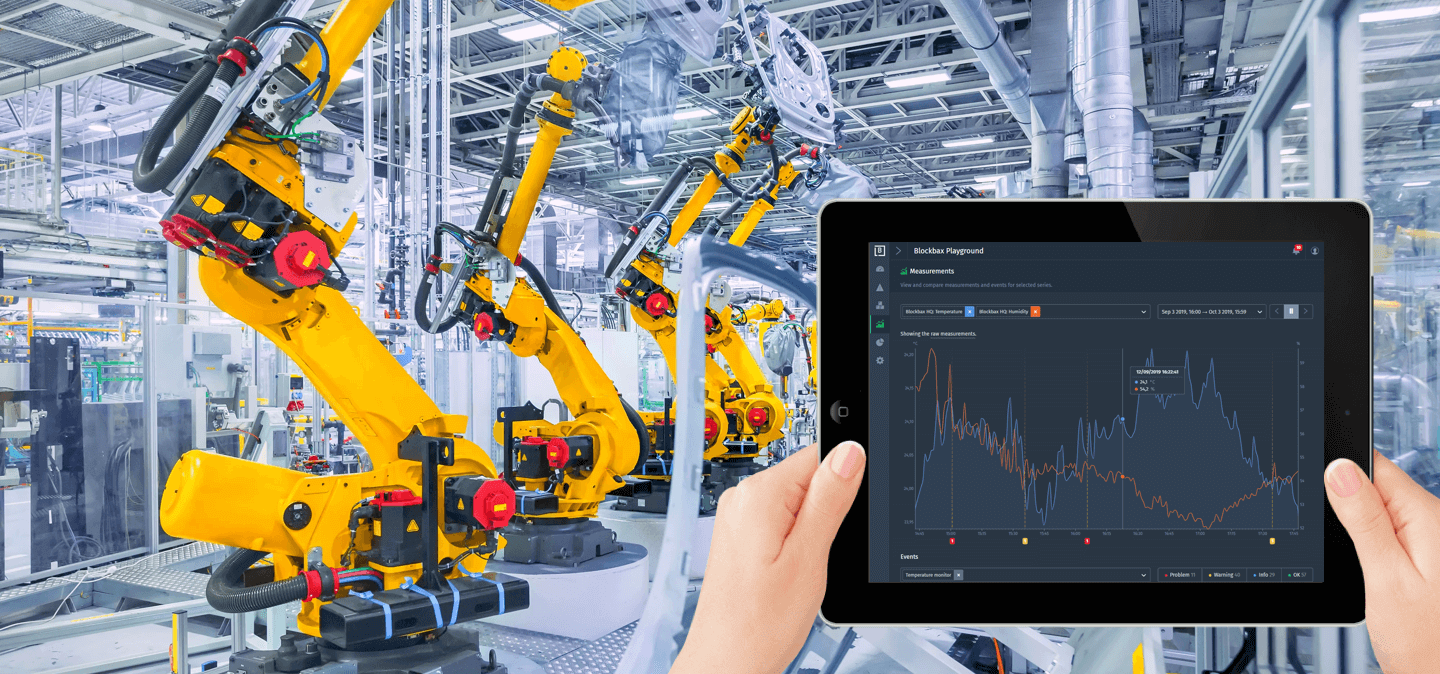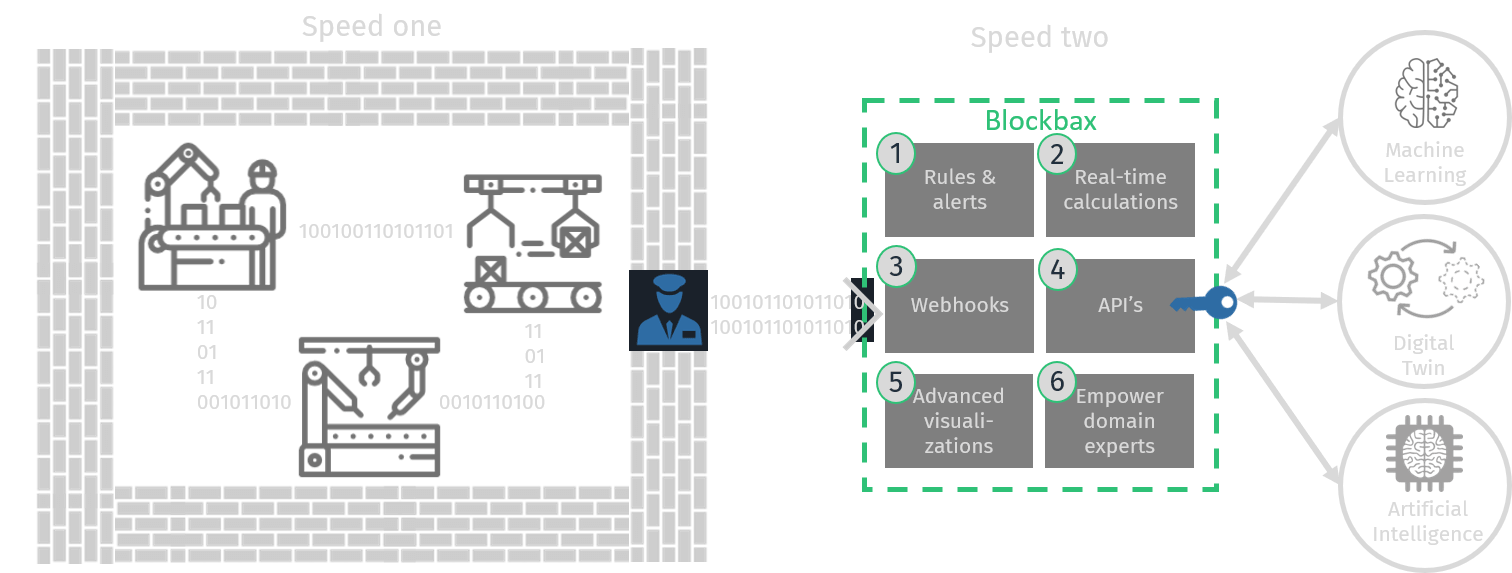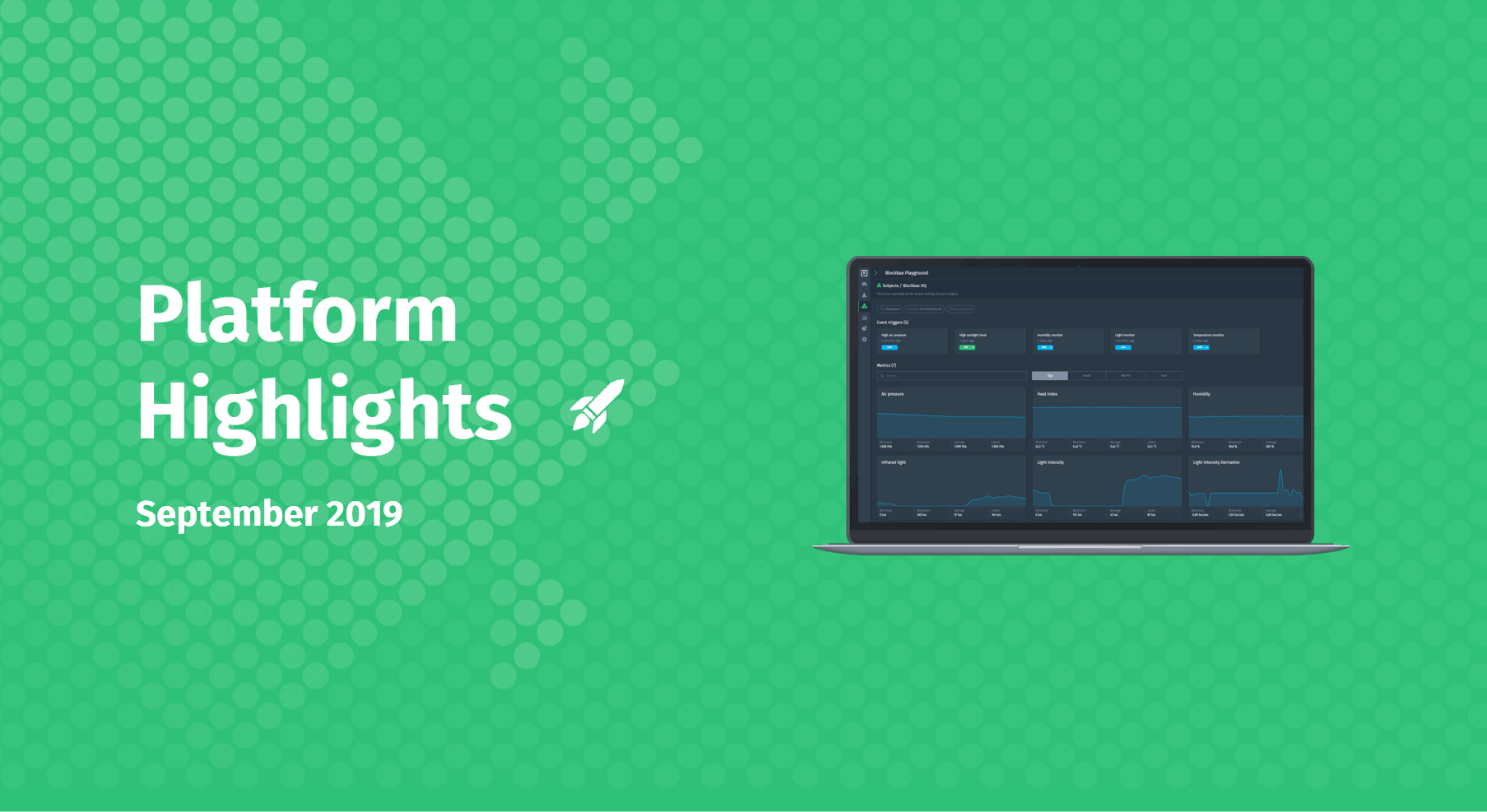Hands on with Industry 4.0 - Introduction
Industry 4.0 is clouded by a lot of buzz. At Blockbax we like to demystify buzz, make it practical and get hands on. In this first blog we are going to introduce the topic and share our take on it.
So, what is Industry 4.0 all about?
The internet is full of articles about Industry 4.0 so we like to keep it to the point. Here is how we see it; Industry 4.0 is the advanced digitization of manufacturing. This digitization started around 1970 with Industry 3.0 when manufacturers start to apply electronics, computers and IT to automate the factory. So, Industry 4.0 is all Industry 3.0 brought to the factory floor, improved with a lot more technologies to create smart production facilities.
Think big, start at the beginning
New ideas pop-up when companies start to brainstorm about the possibilities of Industry 4.0. Ideas are often related to the Internet of Things (IoT) and digital solutions that involve Machine Learning (ML), Digital Twins, Artificial Intelligence (AI) or other tech trends. These solutions show tremendous potential, but we see them often trapped in a pilot phase. Advancing beyond a pilot to a broader rollout is hardly seen due to the lack of a data architecture to build upon.
It’s OK to think big but we believe it is crucial to start with getting the data out of your operational, often closed, systems and make it easily accessible. We rarely see companies taking this first step…
Accelerate with a two-speed data architecture
The first speed data architecture is a traditional one where factory machines should keep running without any dependencies. These machines are managed by local control operators.
The second speed runs in parallel and processes high volumes of data from the same machines to make it accessible for other purposes. Blockbax can accelerate the second part of the architecture by providing a platform that consumes, stores and analyses high volumes of data in real-time. This is done to make data relevant when it is hot, so a person or digital solution can immediately use the data and take action when needed.
The Blockbax Platform enables a company to benefit from its data in a fast and secure way. No hassle with data transmission, storage and architecture for high volumes of streamed data. This makes your data ready to use within no-time and applicable to:
- Easily configure rules and act on alerts. Configure rules that will notify you of anomalies (i.e. anomaly detection) or predict when machines start to malfunction (i.e. predictive maintenance).
- Real-time calculations. Derive more valuable metrics based on measurements from different sensors or other sources.
- Take advantage of webhook calls. Automatically start a workflow when the webhook sends an event to your maintenance planning system.
- Extend with your own analysis. Easily retrieve all data via the API as input for a BI tool, ML model or other analysis.
- Advanced visualizations. Use the graphs and other drill-down reports to get insights when interesting patterns occur.
- Empower domain experts. Let an engineer configure triggers and change settings on the spot based on their freshly gained field knowledge.
Embark your Industry 4.0 journey by building a two-speed data architecture with Blockbax to have a solid foundation for the digital solutions you envision.
Think big, start at the beginning… but how?
Start small when setting up a two-speed data architecture. Start where the value is. Keep your factory running and in parallel, read data from actuators and sensors in PLCs. How this will work practically, including leveraging our edge agent, is covered in the next blogs.
I hope the first blog sparked some new ideas and interest. It would be great to hear from you! Feel free to drop me a note at webuildrockets@blockbax.com.








